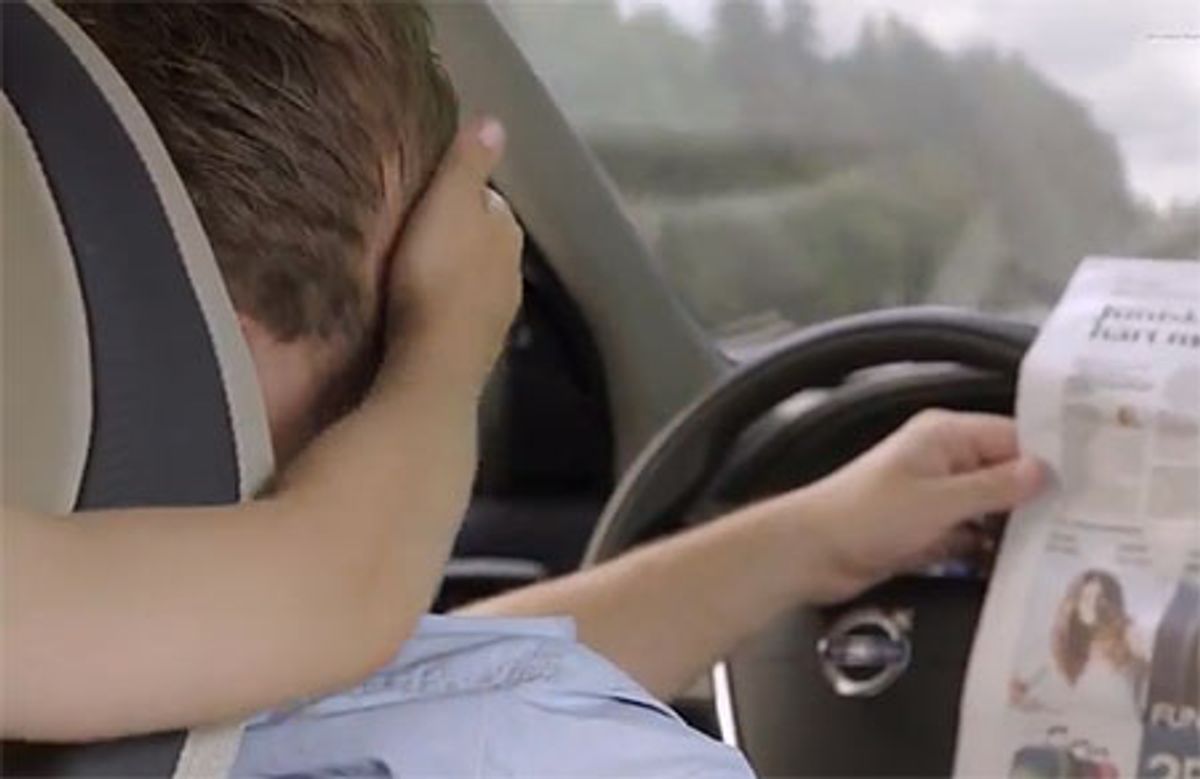In the (hopefully not too distant) future, we'll all be driving down the highway like this guy: reading a newspaper with our eyes being covered up. It'll be possible thanks to Volvo and six other European partners, who just concluded the SARTRE (Safe Road Trains for the Environment) project: it's not autonomous cars, not yet, but it's a lot closer to reality.
Google might be doing a pretty good job with fully autonomous cars that can drive themselves everywhere, but it's gonna be awhile before you have one of them parking itself in your driveway. The SARTRE project is much more near-term, using technologies that (largely) exist in current production cars to simply get vehicles to follow behind a truck in what's called a Road Train. Here it is in action:
The technical requirements for doing something like this are minimal. Your car doesn't need to do anything fancy, since there's a human (the truck driver leading the train) in the loop. All it has to be able to do is follow the car in front of it, which can be done with an adaptation of existing technology, as a technical specialist on the project explains: "we have extended the camera, radar and laser technology used in present safety and support systems such as Adaptive Cruise Control, City Safety, Lane Keeping Aid, Blind Sport Information System and Park Assist Pilot.” See? All the hardware is there already!
To do this Road Train thing, only two (relatively minor) modifications need to be made to the vehicles involved: you need some sort of interface for the driver, and a sort-range vehicle-to-vehicle communication system, all of which Volvo has working at the prototype stage, as the above video shows. And besides making it so that you don't have to pay attention while driving, Road Trains save you between 10% and 20% in gas (since you're drafting behind other vehicles the whole time), a savings which can then be used to compensate the trucker who you're following. Plus, it's better for the environment, and helps cut down on traffic congestion by reducing speed variations.
The SARTRE project has officially concluded with this final test showing that platooned traffic can be integrated with other road users on conventional highways. There are still some obstacles that have to be ironed out before public adoption can begin; besides the (one again we're going to say relatively minor) technical hurdles, Volvo has to make sure that their tech can cope with things like emergency obstacle avoidance and sudden braking. When we do first see operational Road Trains, they're likely to be in the middle lane on highways, moving relatively slowly. But really, would the speed matter that much to you? Personally, I'd be more than happy to add an extra 15% or whatever to my travel time if it meant that I could do work (or take a nap) the entire way.
Via [ SARTRE ]
Evan Ackerman is a senior editor at IEEE Spectrum. Since 2007, he has written over 6,000 articles on robotics and technology. He has a degree in Martian geology and is excellent at playing bagpipes.




